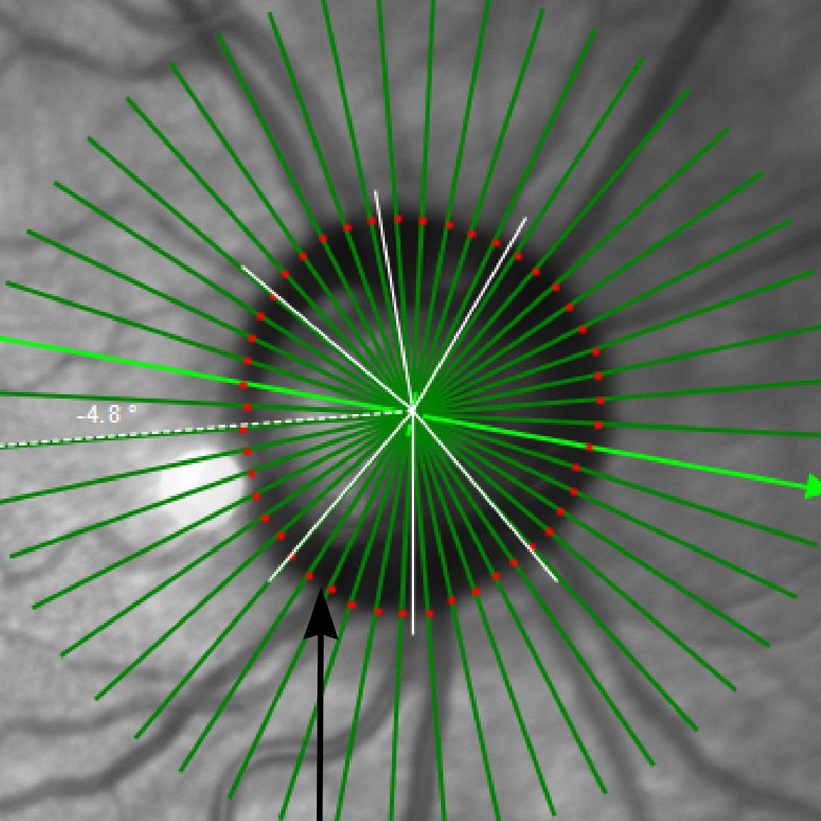Facilitating glaucoma diagnosis with inter-eye neuroretinal rim asymmetry analysis using spectral domain optical coherence tomography
Main Article Content
Abstract
Abstract
Purpose: To determine if inter-eye asymmetry of a three-dimensional neuroretinal rim parameter, the minimum distance band, is useful in differentiating normal from open-angle glaucoma eyes.
Materials and Methods: This is a cross-sectional study. Both eyes of 28 normal subjects 33 glaucoma subjects were analyzed. Subjects underwent spectral domain optical coherence tomography imaging of both eyes. A custom-designed segmentation algorithm calculated mean minimum distance band neuroretinal rim thickness globally, for four quadrants and for four sectors. Inter-eye minimum distance band thickness asymmetry was calculated as the absolute difference in minimum distance band thickness values between the right and left eyes.
Results: Increasing minimum distance band thickness asymmetry was not associated with increasing age or increasing refractive error asymmetry. Glaucoma patients had thinner mean neuroretinal rim thickness values compared to normal patients (209.0 μm versus 306.0 μm, P < 0.001). Glaucoma subjects had greater inter-eye thickness asymmetry compared to normal subjects for the global region (51.9 μm versus 17.6 μm, P < 0.001) as well as for all quadrants and all sectors. For detecting glaucoma, a thickness asymmetry value greater than 28.3 μm in the inferior quadrant yielded the greatest sum of sensitivity (87.9%) and specificity (75.0%). Globally, thickness asymmetry greater than 30.7 μm yielded the greatest sum of sensitivity (66.7%) and specificity (89.3%).
Discussion: This study indicates that inter-eye neuroretinal rim minimum distance band asymmetry measurements, using high-density spectral domain optical coherence tomography volume scans, may be an objective and quantitative tool for the evaluation of open-angle glaucoma patients.
Downloads
Article Details

This work is licensed under a Creative Commons Attribution-NonCommercial-NoDerivatives 4.0 International License.




